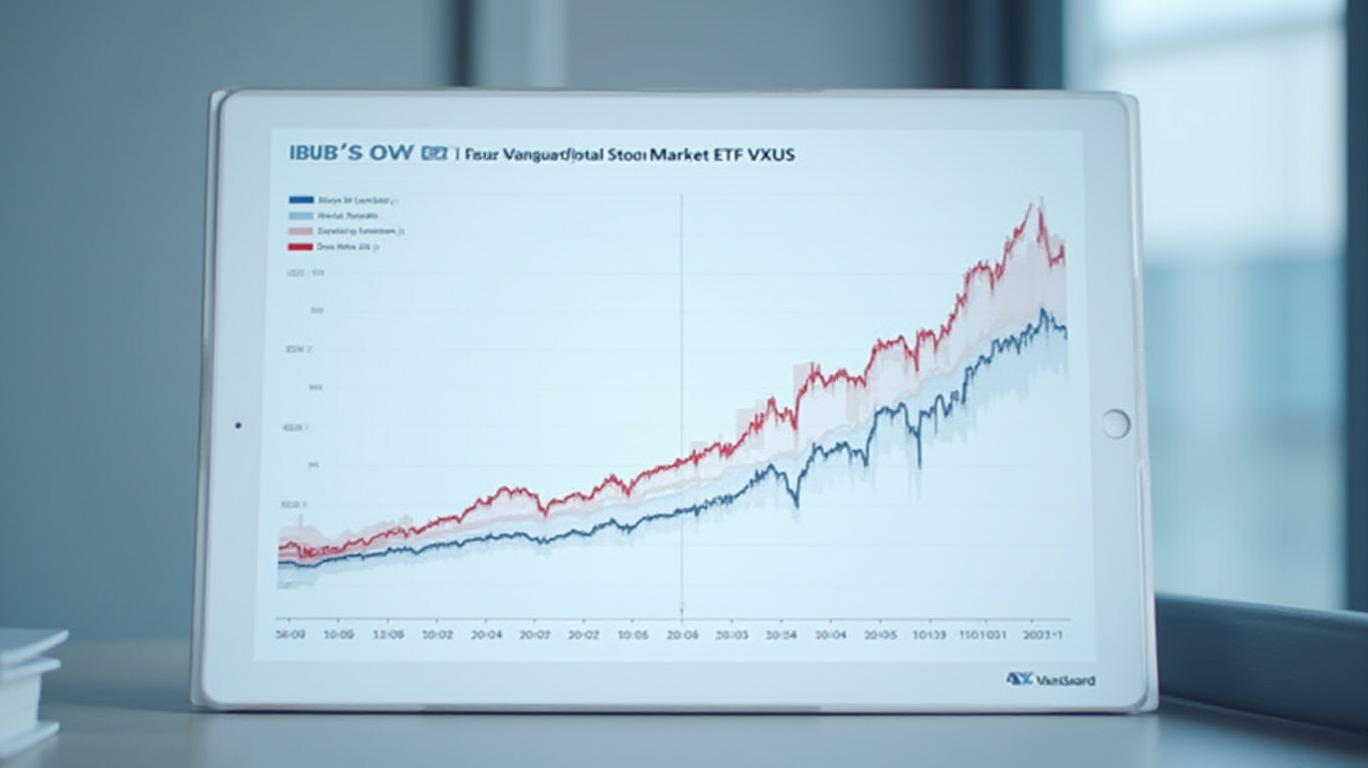Why IDUB Fails as an Ex-US Equity Proxy Despite Its High Yield
The quest for yield in international equities has led investors to actively managed ETFs like the Aptus International Enhanced Yield ETF (IDUB). Yet, beneath its promise of "enhanced income" lies a structural design that compromises its ability to serve as a true proxy for ex-US equity exposure. By prioritizing options-driven yield over pure market tracking,
exposes investors to active management inefficiencies, tracking errors, and derivative risks—flaws that render it a poor substitute for passive benchmarks like the iShares Core MSCI Total International Stock ETF (VXUS) or its sibling (IXUS). Here’s why the siren song of high yield may drown out the realities of this ETF’s limitations.The Illusion of Enhanced Yield: Options Overlays and Active Rebalancing
IDUB’s strategy hinges on writing out-of-the-money call options on international equity ETFs like the iShares MSCI EAFE ETF (EFA) to generate premium income. While this approach can boost short-term distributions—such as its $0.4077 capital gains payout in December 2023—the structural costs are steep.
First, the active management fee of 0.45% (over five times VXUS’s 0.08% expense ratio) immediately erodes returns. Second, the option overlay introduces asymmetric risk:
- Upside Limitation: By selling calls, IDUB forfeits gains above the strike price, capping potential returns during market rallies.
- Downside Volatility: Weekly rolls of options require constant rebalancing, exposing the fund to timing risks and transaction costs.
The result? A tracking error against broad international indices that grows during volatile periods. Since its 2021 launch, IDUB’s NAV has delivered a -4.28% annualized return, underperforming VXUS’s passive exposure to global equities. Even its 6.2% one-year return as of April 2024 is a fleeting victory against a broader trend of underperformance.
Structural Flaws: Derivatives, Concentration, and "Diworsification"
IDUB’s holdings reveal a portfolio stacked against its stated goal of diversification:
1. ETF Stacking: Over 86% of its assets are concentrated in two ETFs—IDEV (58.74%) and SPEM (28.03%)—which themselves track narrow slices of developed and emerging markets. This creates double-layered fees (IDUB’s 0.45% plus the underlying ETFs’ costs) and limits exposure to smaller-cap stocks or emerging markets outside its core holdings.
2. Option Overhang: The remaining 12.5% is allocated to out-of-the-money call options, which add speculative exposure to EFA’s volatility. While these contracts may generate premiums in calm markets, they vanish during sell-offs, leaving investors with the downside of the underlying ETFs without the upside.
Meanwhile, VXUS avoids such complexity by directly holding over 8,000 international equities, weighted by market cap. Its 0.08% expense ratio ensures cost efficiency, while its passive design minimizes tracking drift. Critics of VXUS cite its inclusion of small-cap and emerging-market stocks as "diworsification," but alternatives like Vanguard’s VEU (0.07% ER) or VEA (excluding small caps) offer cleaner exposure—without sacrificing yield to derivatives.
The Cost of "Enhanced" Income: A False Trade-Off
Proponents of IDUB argue that its distributions justify its flaws. Yet, the fund’s -1.95% one-month return in April -2024 highlights how its option strategy fails during market downturns. The premiums collected from selling calls are easily erased by losses on the underlying ETFs when volatility spikes.
In contrast, VXUS’s passive approach avoids such pitfalls. Its dividends flow from the global equity market’s organic income, not speculative derivatives. While VXUS may not offer monthly payouts, its $36 billion asset base and daily liquidity ensure stability—a stark contrast to IDUB’s $177M AUM, which struggles to compete in liquidity-sensitive option markets.

Conclusion: IDUB’s "Yield" Is a Detour from True Exposure
IDUB’s active management and options overlay create a high-risk, high-cost structure that fails to deliver consistent outperformance or broad international diversification. Its tracking errors, concentrated holdings, and reliance on derivatives make it a speculative play rather than a reliable proxy for ex-US equities.
Investors seeking genuine global exposure should stick with passive ETFs like VXUS or VEU, which offer cost efficiency, broad diversification, and minimal structural risks. For those wary of small-cap inclusion, VEA’s developed-market focus or Avantis’ quality-focused ETFs (e.g., AVDE) provide better value than IDUB’s yield-for-risk gamble.
The lesson? Yield engineered through active management and derivatives is no substitute for true market exposure. In a world where passive ETFs dominate due to their simplicity and cost, IDUB’s complexity comes at a price investors cannot afford to overlook.
Actionable Takeaway: Avoid IDUB for core international equity exposure. For income, consider dividend-focused active funds with lower fees (e.g., Fidelity Diversified International FDIVX) or pair VXUS with a standalone options strategy if you must seek premium income.
The market doesn’t pay for complexity—it rewards clarity. Choose simplicity.

Comments
No comments yet